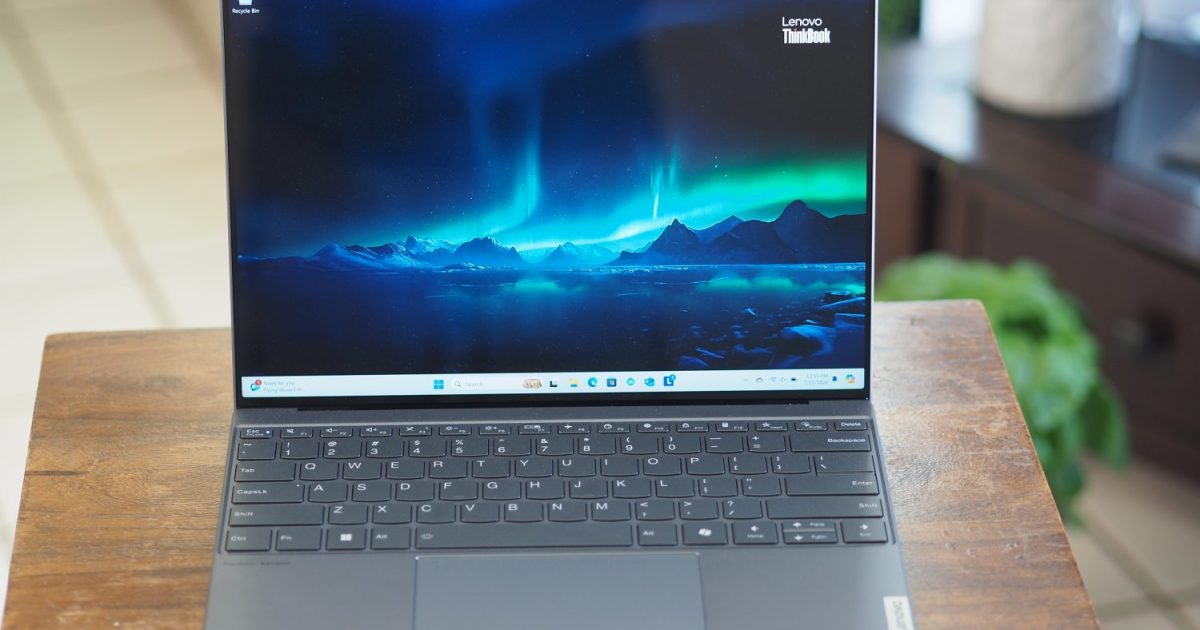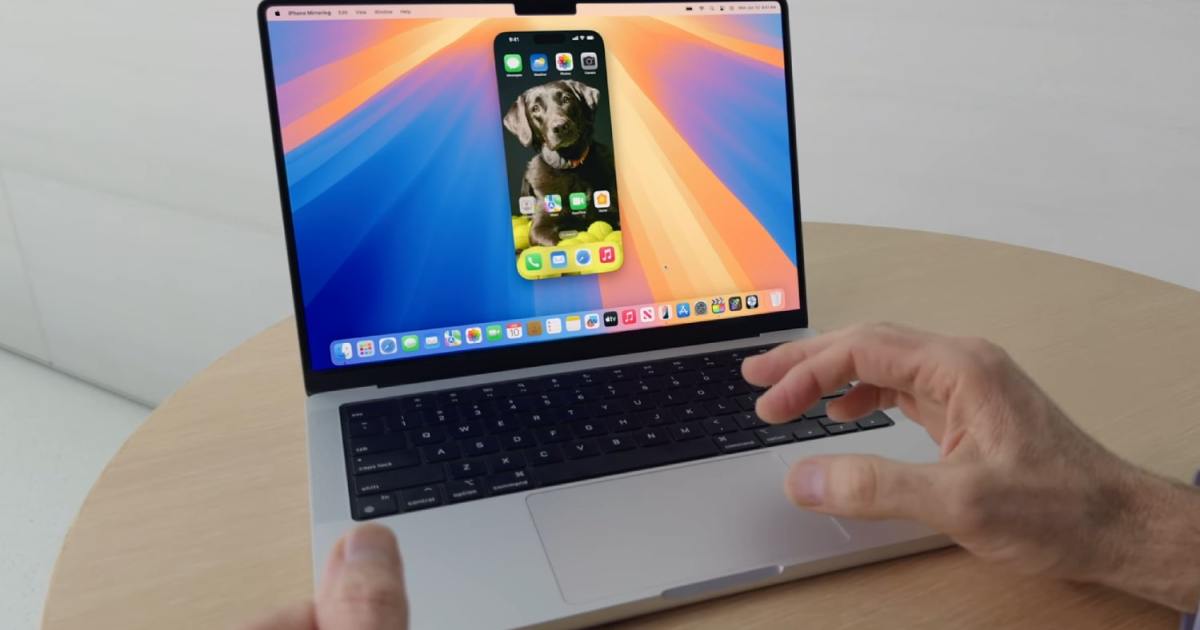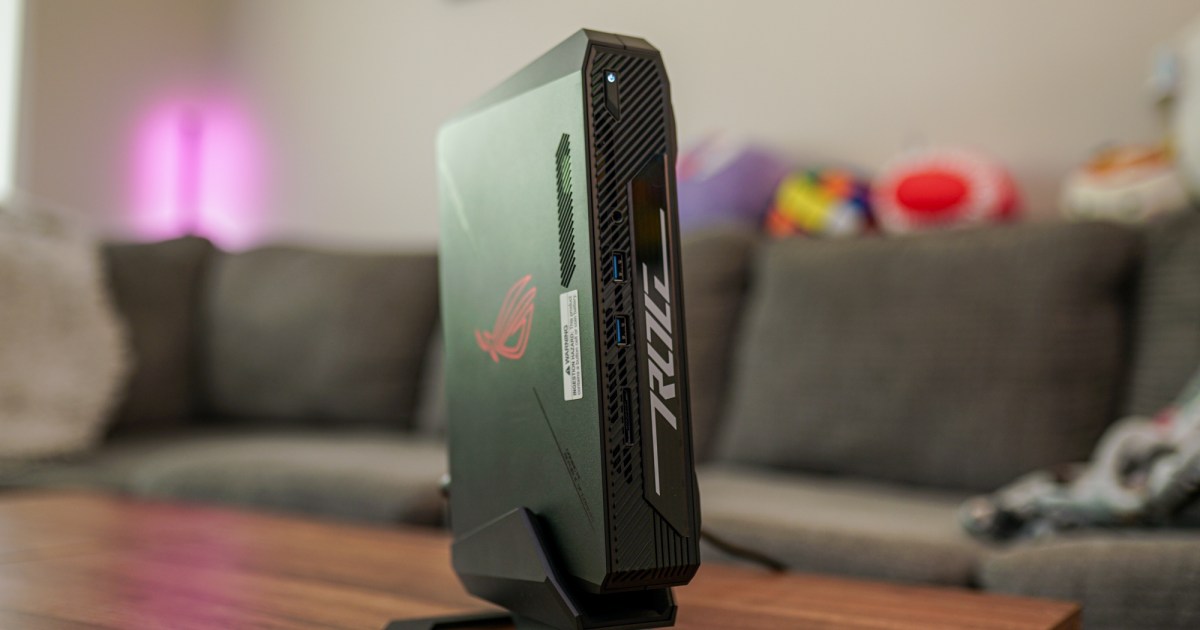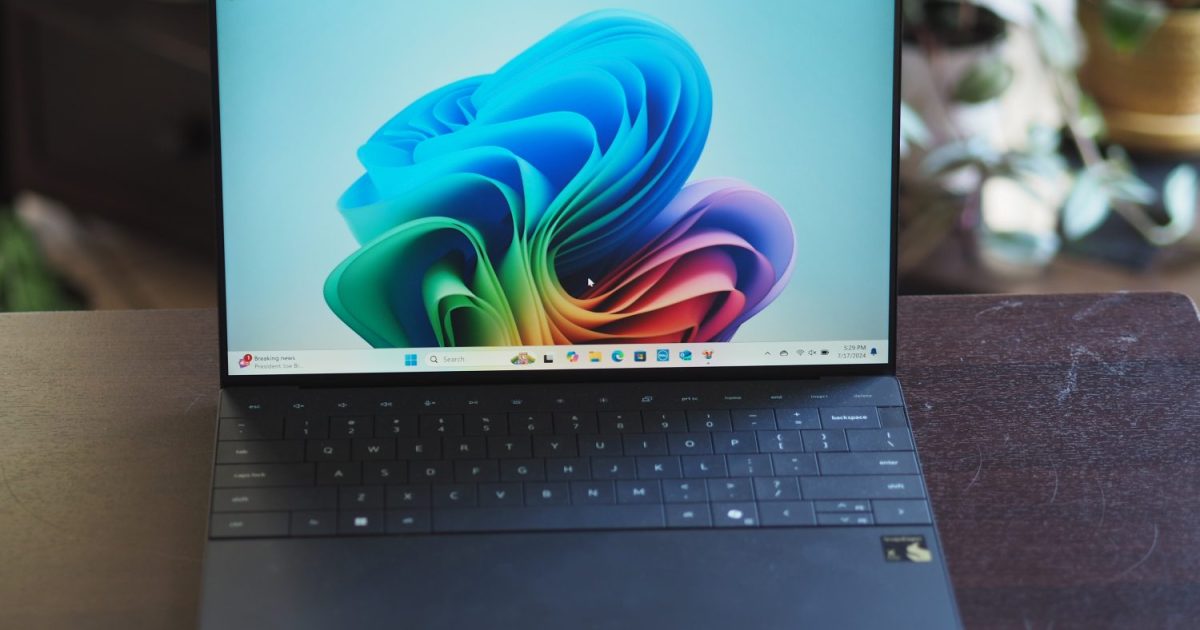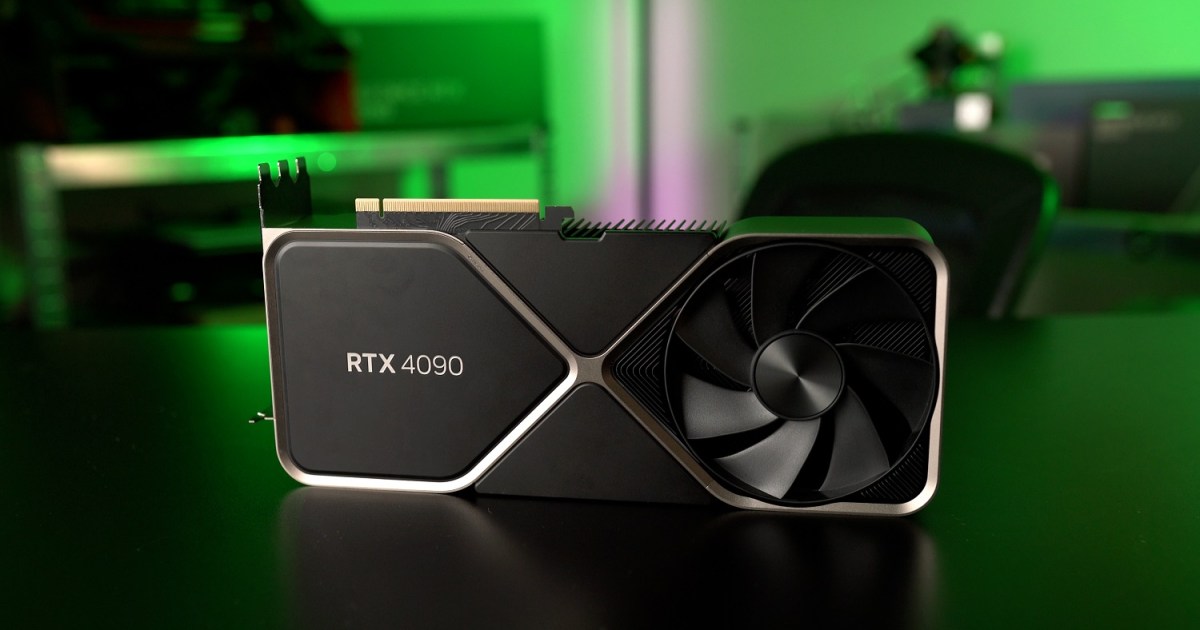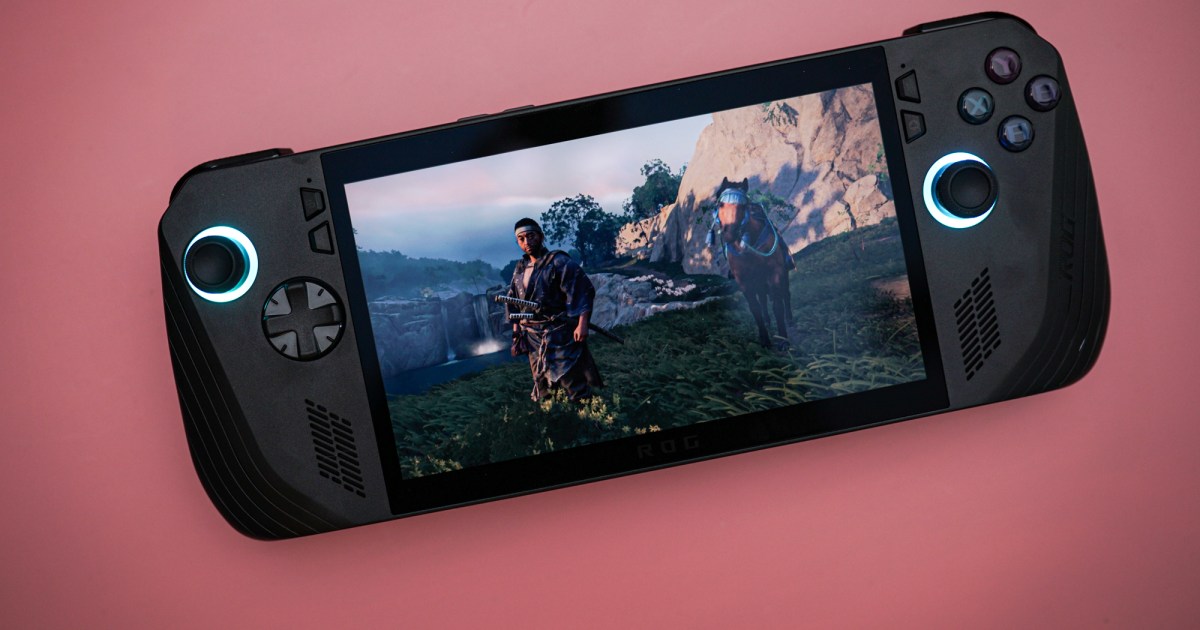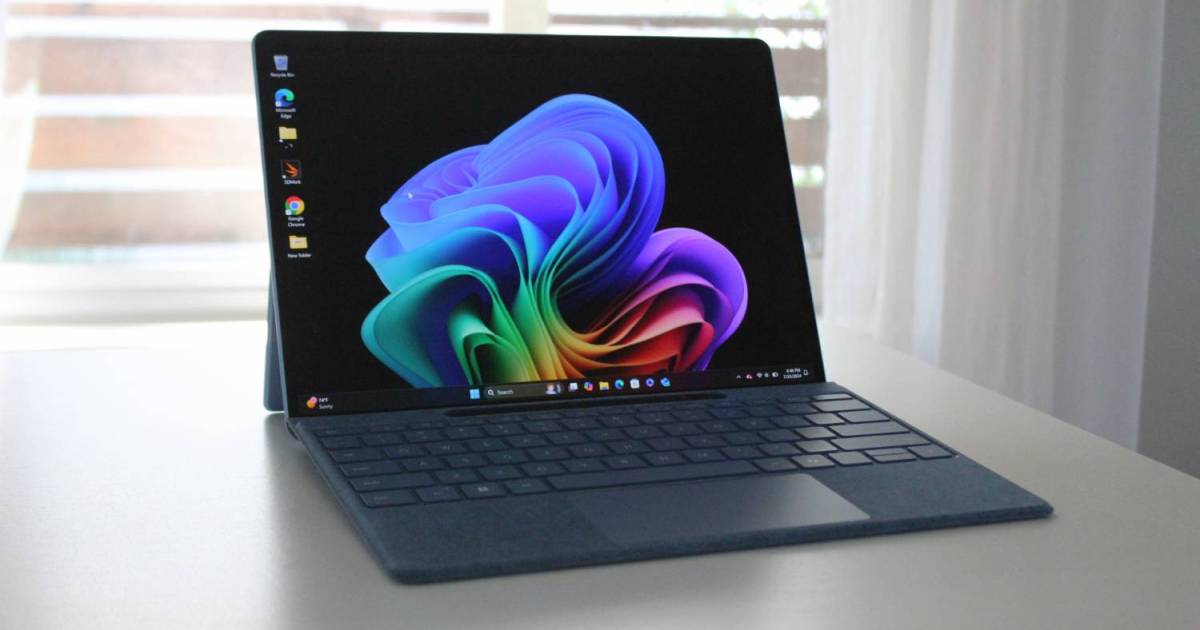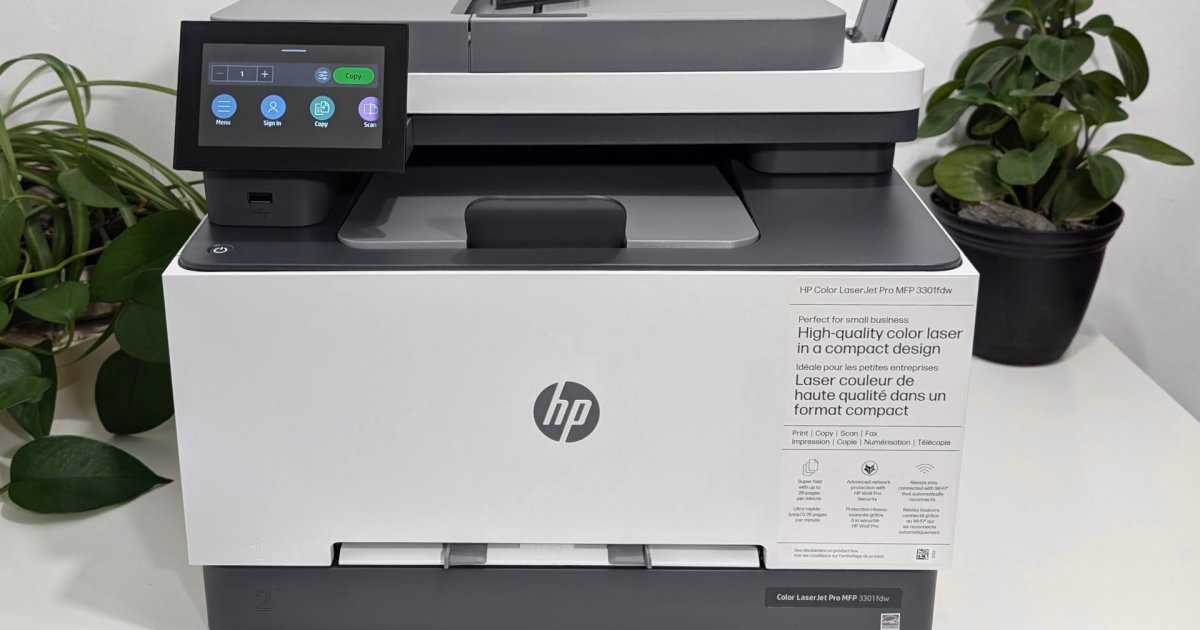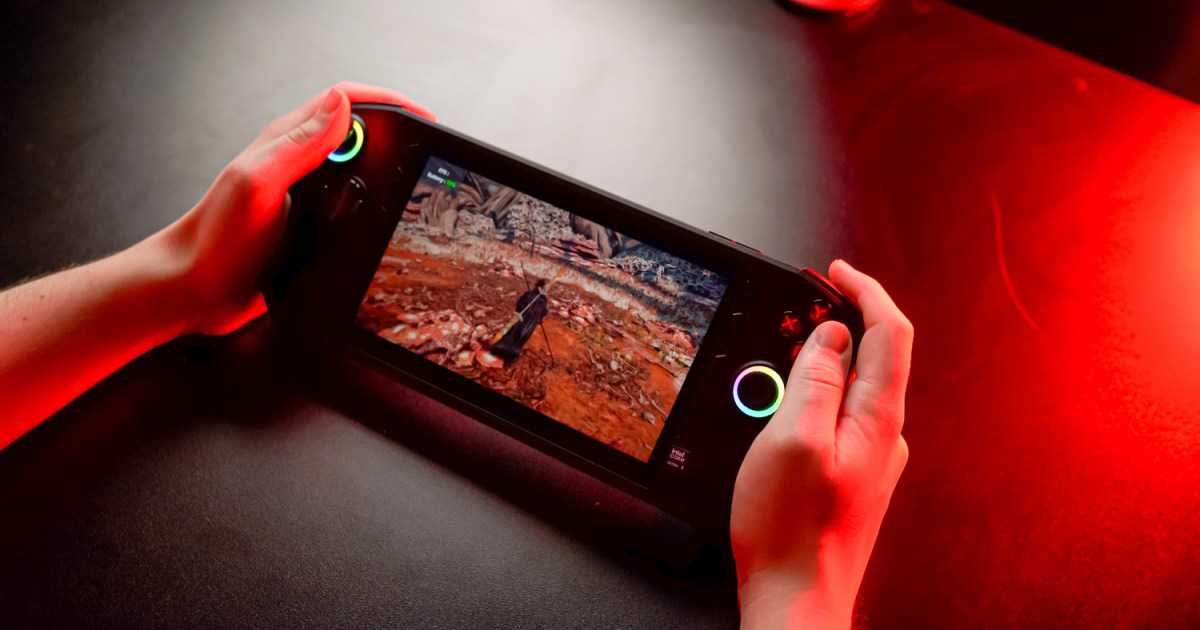If you’re in the market for a premium 13-inch laptop, you expect top-tier performance, impressive battery life, and a stunning display. Lenovo aims to deliver these features with the ThinkBook 13x Gen 4, but does it live up to the hype, especially considering its price and the rise of Microsoft Copilot+ PCs? Let’s dive in.
Specifications and Configurations
The ThinkBook 13x Gen 4 offers some unusual configuration choices. The base model, priced at $1,580, features an Intel Core Ultra 5 125H processor, 16GB of RAM, a 512GB SSD, and a 13.5-inch 2.8K IPS display (the only display option). A significant jump to the Intel Core Ultra 9 185H, a more power-hungry processor typically not found in 13-inch laptops, is available for an additional $432. The Core Ultra 9 configuration also allows for 32GB of RAM and a 1TB SSD, pushing the price to $2,220. While the ThinkBook 13x Gen 4 isn’t cheap, its pricing is comparable to competitors like the Dell XPS 13. However, the Apple MacBook Air M3 offers a more attractive starting price of $1,099, making it a strong contender in this category.
| Feature | Lenovo ThinkBook 13x Gen 4 |
|---|---|
| Dimensions | 11.53 x 8.07 x 0.51 inches |
| Weight | 2.71 pounds |
| Processor | Intel Core Ultra 5 125H / Intel Core Ultra 9 185H |
| Graphics | Intel Arc |
| RAM | 8GB / 16GB / 32GB |
| Display | 13.5-inch 16:10 2.8K (2880 x 1800) IPS, 120Hz |
| Storage | 512GB SSD / 1TB SSD |
| Touchscreen | Yes |
| Ports | 3 x USB-C with Thunderbolt 4, 1 x 3.5mm audio jack, 1 x Magic Bay pogo pin |
| Wireless | Wi-Fi 6E, Bluetooth 5.1, Optional 4G LTE |
| Webcam | 1080p with infrared for Windows Hello |
| Operating System | Windows 11 |
| Battery | 74 watt-hour |
| Price | Starting at $1,580 |
Design and Portability
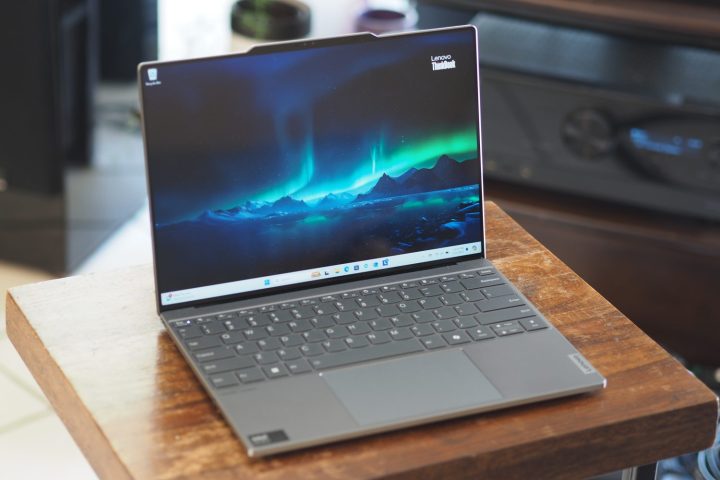 alt=The Lenovo ThinkBook 13x Gen 4 open on a desk, showcasing its slim profile and keyboard.
alt=The Lenovo ThinkBook 13x Gen 4 open on a desk, showcasing its slim profile and keyboard.
The ThinkBook 13x Gen 4 boasts a robust, all-aluminum construction. Its rigid design eliminates flexing and bending, exceeding the build quality of competitors like the MacBook Air M3. The thin display bezels maximize screen real estate within a compact footprint. While slightly thicker than the Asus Zenbook S 13 OLED and MacBook Air M3, it remains highly portable.
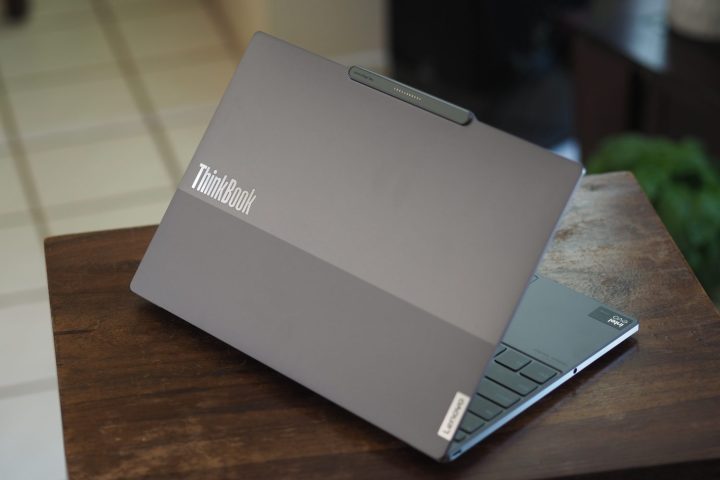 alt=The closed lid of the Lenovo ThinkBook 13x Gen 4, highlighting the two-tone design and subtle branding.
alt=The closed lid of the Lenovo ThinkBook 13x Gen 4, highlighting the two-tone design and subtle branding.
The dark gray color scheme with chrome accents creates a sophisticated aesthetic. The two-tone lid adds a touch of modern flair without being overly flashy. Lenovo strikes a balance between professional and contemporary design.
Keyboard and Touchpad
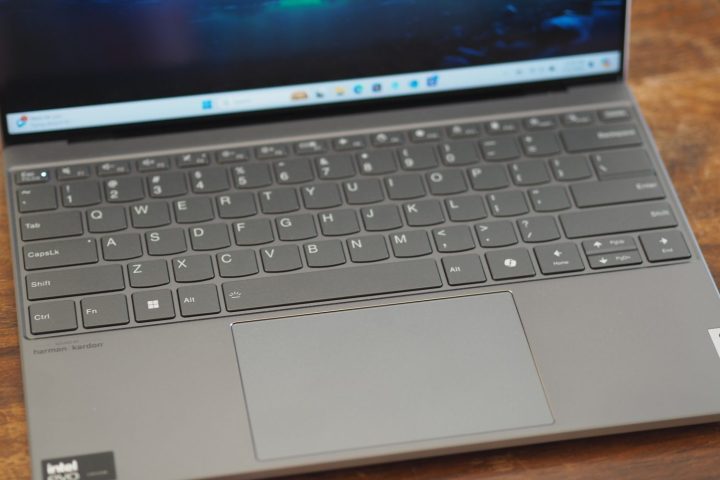 alt=A top-down view of the Lenovo ThinkBook 13x Gen 4, focusing on the keyboard and touchpad layout.
alt=A top-down view of the Lenovo ThinkBook 13x Gen 4, focusing on the keyboard and touchpad layout.
The ThinkBook 13x Gen 4’s keyboard offers a comfortable typing experience with light, snappy keys. While the sculpted keycaps feel slightly smaller than previous Lenovo keyboards, the overall spacing feels more generous. The optional haptic touchpad is a welcome addition and a significant upgrade over the standard mechanical touchpad, offering a more premium and responsive experience.
Connectivity and Expandability
The ThinkBook 13x Gen 4’s port selection is limited to three Thunderbolt 4 ports and a 3.5mm audio jack. While it lacks legacy ports, the inclusion of three Thunderbolt 4 ports offers more charging flexibility than the Dell XPS 13.
Lenovo’s Magic Bay system adds a unique element of expandability. The pogo pins located in the reverse webcam notch allow for the attachment of accessories like the Magic Bay Light, Magic Bay LTE for 4G connectivity, a Magic Bay 4K webcam, and the Magic Bay Studio with integrated speakers. The Magic Bay Light, included with the review unit, provides powerful, adjustable lighting for video conferencing.
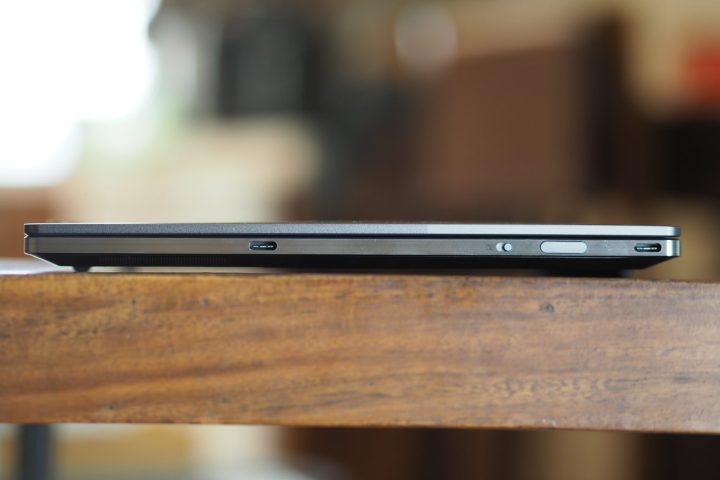 alt=The left side of the Lenovo ThinkBook 13x Gen 4 displaying the available ports.
alt=The left side of the Lenovo ThinkBook 13x Gen 4 displaying the available ports.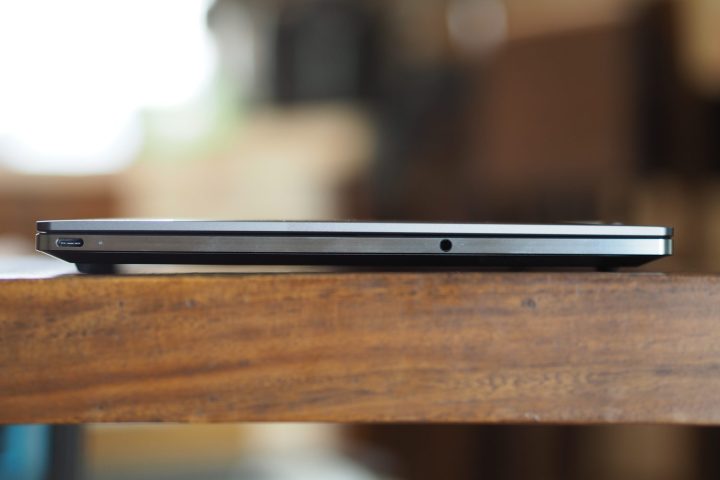 alt=The right side of the Lenovo ThinkBook 13x Gen 4 showing its port selection.
alt=The right side of the Lenovo ThinkBook 13x Gen 4 showing its port selection.
However, the limited availability and confusing purchasing process for Magic Bay accessories detract from their overall usefulness. Lenovo needs to streamline the acquisition of these add-ons.
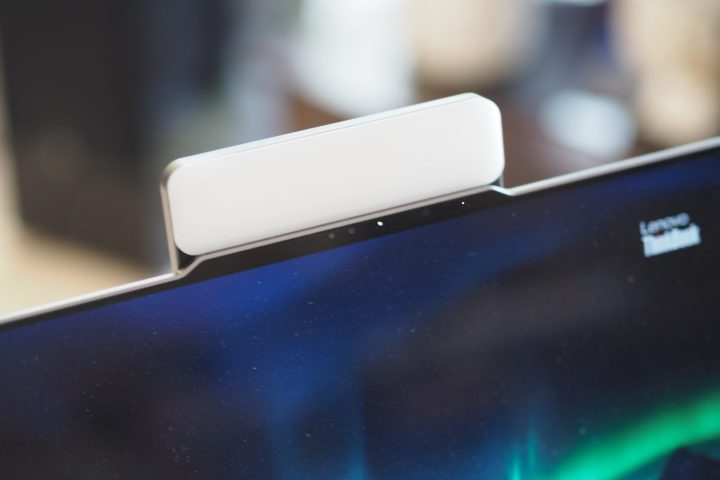 alt=The webcam of the Lenovo ThinkBook 13x Gen 4 with the Magic Bay Light turned off.
alt=The webcam of the Lenovo ThinkBook 13x Gen 4 with the Magic Bay Light turned off.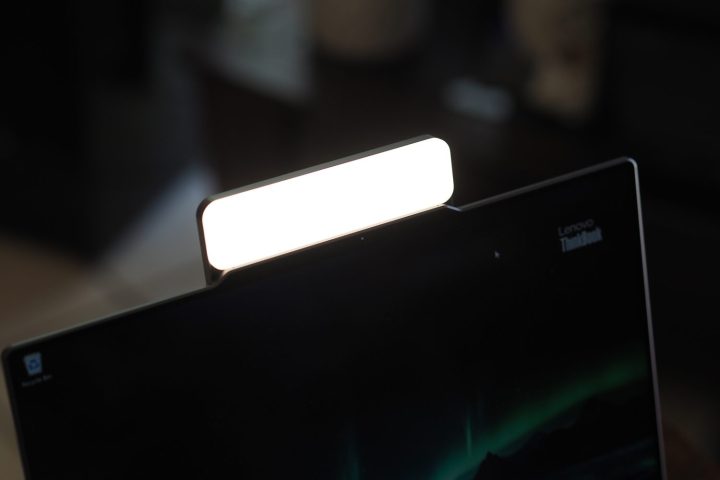 alt=The webcam of the Lenovo ThinkBook 13x Gen 4 illuminated by the attached Magic Bay Light.
alt=The webcam of the Lenovo ThinkBook 13x Gen 4 illuminated by the attached Magic Bay Light.
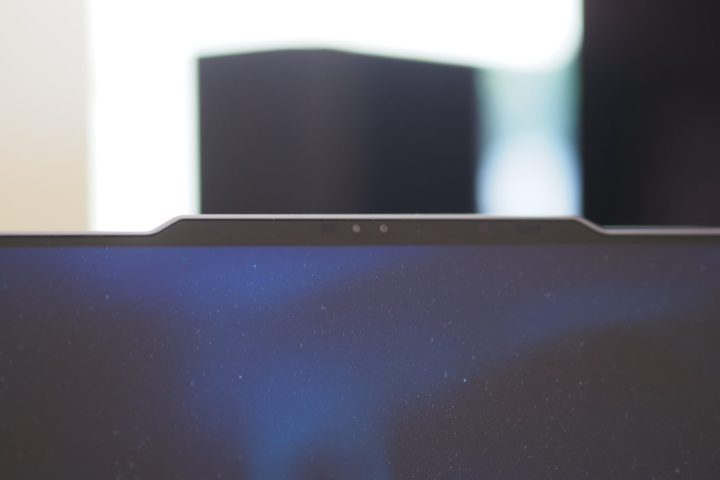 alt=Close-up view of the Lenovo ThinkBook 13x Gen 4's webcam.
alt=Close-up view of the Lenovo ThinkBook 13x Gen 4's webcam.
The integrated 1080p webcam with infrared supports Windows Hello facial recognition. While the Intel Meteor Lake chipset’s NPU isn’t powerful enough for Microsoft Copilot+ features, it does support standard Microsoft Studio Effects like background blurring.
Performance
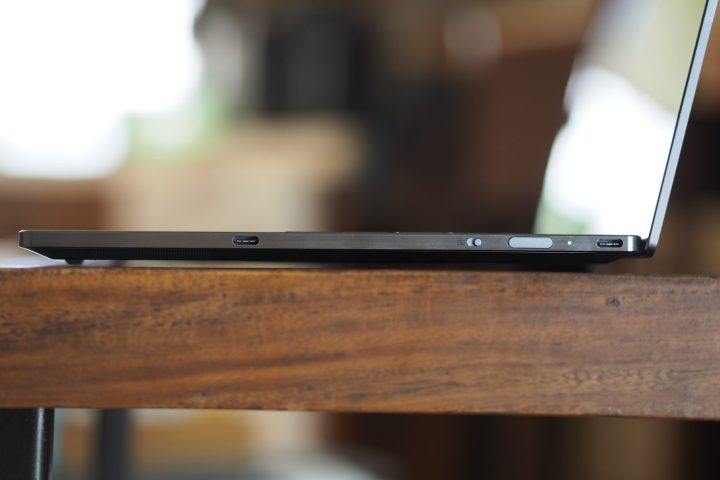 alt=Side view of the Lenovo ThinkBook 13x Gen 4, showcasing its slim profile and port selection.
alt=Side view of the Lenovo ThinkBook 13x Gen 4, showcasing its slim profile and port selection.
The ThinkBook 13x Gen 4 offers two processor options: the 28-watt Intel Core Ultra 5 125H and the 45-watt Core Ultra 9 185H. While the Core Ultra 5 is sufficient for everyday productivity, the Core Ultra 9’s higher power consumption and heat generation raise concerns about its suitability for a 13-inch chassis. Benchmark results show decent performance for productivity tasks, but the ThinkBook 13x Gen 4 lags behind competitors in several areas. Gaming performance is limited.
| Benchmark | Lenovo ThinkBook 13x Gen 4 (Core Ultra 5 125H) |
|---|---|
| Geekbench 6 (single/multi) | Balanced: 2,120 / 6,966, Performance: 2,144 / 7,871 |
| Handbrake (seconds) | Balanced: 197, Performance: 190 |
| Cinebench R23 (single/multi) | Balanced: 1,602 / 5,113, Performance: 1,549 / 5,306 |
| PCMark 10 Complete | 6,344 |
Battery Life
The ThinkBook 13x Gen 4’s 74 watt-hour battery is larger than those found in competitors like the Dell XPS 13 and MacBook Air M3. However, despite its 2.8K IPS display being less power-hungry than OLED panels, battery life is underwhelming. It falls short of competitors, especially compared to the exceptional longevity of the MacBook Air M3 and Windows on Arm devices with Qualcomm Snapdragon X Elite chipsets.
Display and Audio
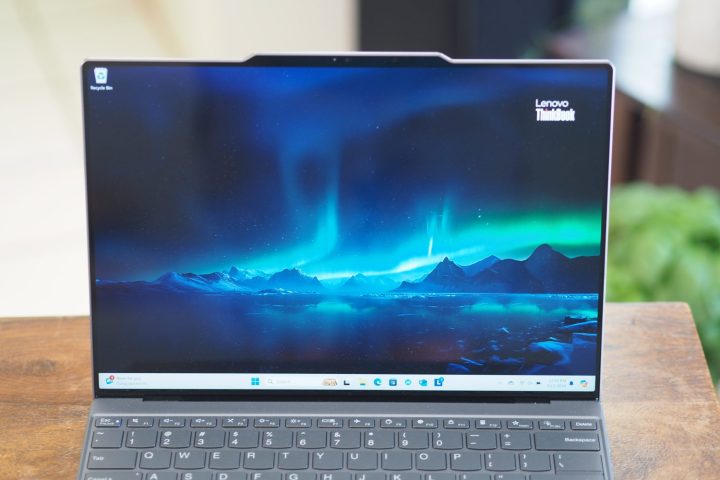 alt=The Lenovo ThinkBook 13x Gen 4 open, displaying a bright image on its screen.
alt=The Lenovo ThinkBook 13x Gen 4 open, displaying a bright image on its screen.
The ThinkBook 13x Gen 4’s 2.8K IPS display offers decent visual quality with good brightness, color accuracy, and contrast. However, its color gamut coverage falls short compared to OLED displays and some competing IPS panels. While sufficient for productivity, it may not satisfy content creators or media enthusiasts.
The audio system, featuring two tweeters and two woofers, delivers clear and loud sound with a surprising amount of bass. It surpasses the audio quality of the Dell XPS 13 and MacBook Air M3.
Conclusion
The Lenovo ThinkBook 13x Gen 4 offers a premium build, a comfortable keyboard, and unique expandability with the Magic Bay system. However, its performance and battery life don’t quite justify its price, especially considering the strong competition in the 13-inch laptop market. While it’s a decent option for general productivity, its compromises in key areas make it difficult to wholeheartedly recommend.



